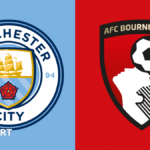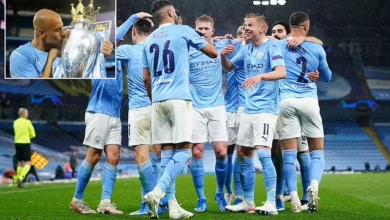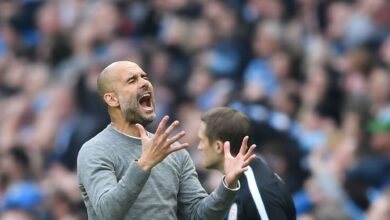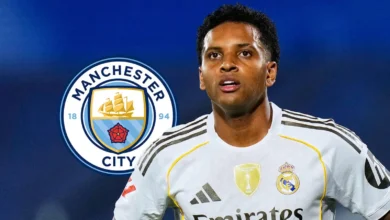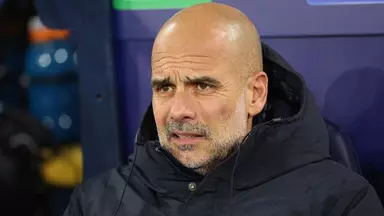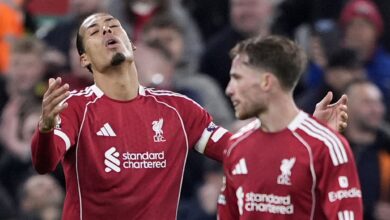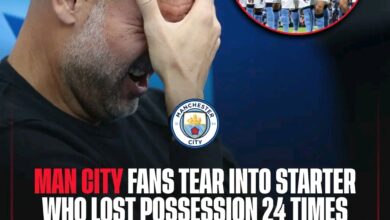Manchester City finally revealed there Greatest player of all time
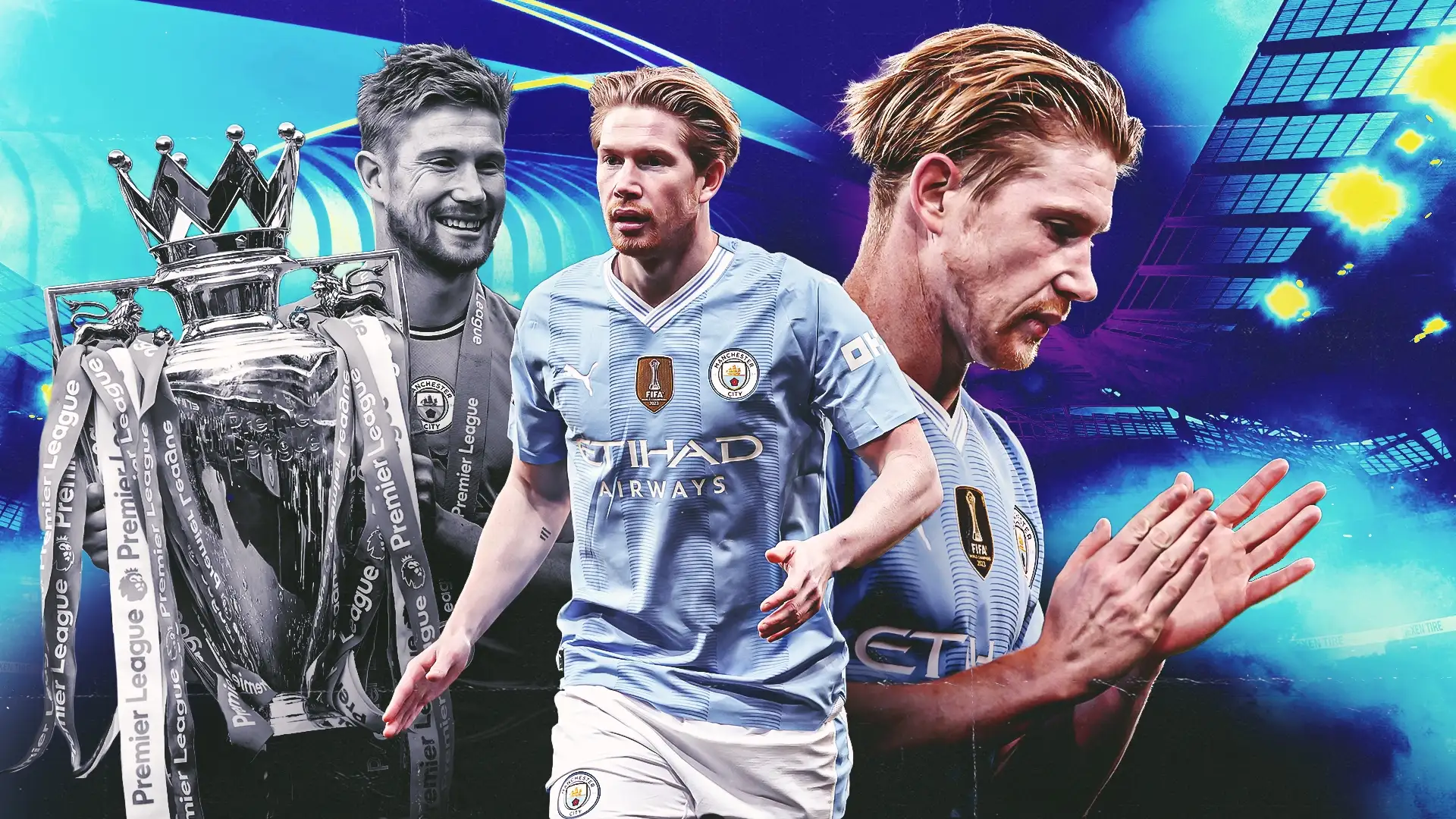
As Kevin De Bruyne prepares to make his 422nd and final appearance for Manchester City in their season-concluding clash against Fulham at Craven Cottage, the football world pauses to reflect on the departure of one of the Premier League’s most exceptional talents. The Belgian maestro’s announcement that he would be concluding his glittering decade-long career at the Etihad Stadium marks the end of an era for the Citizens, prompting a deeper examination of where he stands among the pantheon of Manchester City legends.
De Bruyne’s emotional farewell to the City faithful following their 3-1 victory over Bournemouth on Tuesday night was a testament to the profound connection between player and supporters that has defined his time in Manchester. At 33, the playmaker leaves behind a legacy that will be debated and celebrated for generations to come, having transformed himself from a promising talent into one of the Premier League’s most influential figures.
The task of ranking Manchester City’s greatest ever players is both daunting and subjective, spanning eras from the club’s formative years through to the modern Sheikh Mansour era of unprecedented success. Each generation has produced its own heroes, from the industrial grit of the 1960s and 70s to the technical brilliance of Pep Guardiola’s contemporary machine. This comprehensive analysis examines the ten greatest players to have worn the sky blue shirt, considering their individual brilliance, contribution to team success, longevity, and lasting impact on the club’s identity.
10. Alan Oakes: The Consummate Professional
Beginning our countdown with a player who embodied everything admirable about the beautiful game, Alan Oakes represents the foundation upon which Manchester City’s modern success was built. The Chester-born midfielder’s remarkable 17-year career at the club from 1959 to 1976 established a template for professionalism and dedication that resonates to this day.
Bill Shankly’s endorsement of Oakes as “the very best type of professional, on the field and off it… exactly the kind of player youngsters should use as a model” speaks volumes about his character. In an era when football was transitioning from a working-class pursuit to a more commercialized sport, Oakes maintained the values of hard work, consistency, and unwavering commitment to the cause.
His club-record 680 appearances stood as a testament to his durability and importance to successive City teams. During his tenure, Oakes witnessed and contributed to some of the club’s most significant achievements, including the European Cup Winners’ Cup triumph, a First Division title, an FA Cup victory, and two League Cups. These eight major trophies represented the club’s golden era before the modern resurgence.
What distinguished Oakes was his versatility and intelligence on the pitch. Capable of playing multiple positions across the midfield and defense, he provided managers with tactical flexibility while maintaining a consistently high standard of performance. His leadership qualities, though perhaps less flamboyant than some of his contemporaries, created the stability that allowed more creative talents to flourish around him.
9. Mike Summerbee: The Glamorous Winger
If Alan Oakes represented the substance of Manchester City’s identity, Mike Summerbee provided the style. The winger’s arrival from Swindon Town for just £31,000 in 1965 proved to be one of the shrewdest pieces of business in the club’s history, bringing a level of excitement and glamour that rivaled anything Manchester United’s George Best offered across the city.
Summerbee’s decade of service from 1965 to 1975 coincided with one of the most successful periods in City’s pre-modern history. His 452 appearances and 67 goals tell only part of the story; it was his ability to rise to the occasion in crucial moments that truly defined his legacy. Playing in all 52 games during City’s Second Division title-winning campaign demonstrated his importance to the team’s return to the top flight.
The eight-cap England international’s contribution to City’s trophy collection was substantial, playing integral roles in their European Cup Winners’ Cup victory, First Division title, FA Cup triumph, League Cup success, and two FA Charity Shields. His performances in European competition, particularly during the Cup Winners’ Cup run, showcased his ability to perform on the biggest stages.
Beyond his on-field contributions, Summerbee became a cultural icon for the club and the city of Manchester. His friendship with George Best and their status as two of the era’s most charismatic players helped elevate the profile of Manchester football globally. The statue erected in his honor outside the Etihad Stadium, alongside Francis Lee and Colin Bell, recognizes his enduring significance to the club’s heritage.
Now serving as an ambassador for Manchester City, Summerbee’s continued involvement with the club demonstrates the lasting bonds forged during that golden generation. His transformation from player to institutional figure reflects the deep connection between past and present that characterizes the best football clubs.
8. Yaya Toure: The Modern Colossus
The arrival of Yaya Toure from Barcelona in 2010 marked a pivotal moment in Manchester City’s transformation from ambitious project to elite force. As one of the first high-profile signings of the Sheikh Mansour era, the Ivorian midfielder carried enormous expectations and delivered performances that exceeded even the most optimistic projections.
Toure’s physical presence and technical ability created a unique profile in world football. Standing 6’2″ with exceptional ball-handling skills, he combined the strength and athleticism typically associated with defensive midfielders with the vision and creativity of an attacking playmaker. This versatility made him ideally suited to the demands of Premier League football and Pep Guardiola’s eventually implemented tactical systems.
His impact on Manchester City’s trophy drought was immediate and decisive. The winning goals in both the semi-final and final of the 2011 FA Cup ended the club’s 35-year wait for silverware, establishing Toure as a clutch performer in crucial moments. His brace in the 2-0 victory at Newcastle during City’s penultimate Premier League fixture of the 2011-12 season exemplified his ability to deliver when the stakes were highest.
The 2013-14 campaign represented the peak of Toure’s individual brilliance, with his 20 Premier League goals from midfield showcasing an unprecedented combination of positional discipline and attacking threat. Few midfielders in football history have managed to contribute so effectively at both ends of the pitch while maintaining such consistent performance levels throughout a grueling season.
Over eight memorable years at the Etihad, Toure accumulated 81 goals in 292 appearances while winning three Premier League titles, two EFL Cups, and one Community Shield. His legacy extends beyond statistics to encompass his role in establishing Manchester City as a destination for world-class talent and his contribution to the cultural transformation of the club.
7. Francis Lee: The Record-Breaking Goal Machine
The late Francis Lee, who passed away in October 2023 at age 79, represented the scoring prowess that has always been central to Manchester City’s identity. His £60,000 transfer from Bolton Wanderers in 1967 established him as a club-record signing, and his subsequent performances more than justified the investment.
Lee’s 148 goals in 330 appearances across seven years placed him third on the club’s all-time scoring charts, a remarkable achievement that stood the test of time until the modern era. His consistency was perhaps even more impressive than his overall tally, serving as the club’s top scorer for five consecutive seasons from 1969-70 to 1973-74.
What distinguished Lee from other prolific goalscorers was his versatility and reliability in crucial moments. His penalty in the 1970 European Cup Winners’ Cup final demonstrated his composure under the most intense pressure, while his contributions to domestic success helped establish City as a major force in English football. The collection of trophies during his tenure—First Division, FA Cup, League Cup, European Cup Winners’ Cup, two Charity Shields, and the Second Division—represented one of the most successful periods in the club’s history.
Joe Mercer’s description of Lee as “the final piece in the jigsaw” upon his arrival speaks to his tactical importance beyond mere goalscoring. His ability to link play, create opportunities for teammates, and provide the clinical finishing that separates good teams from great ones made him indispensable to City’s success.
The statue commemorating Lee alongside Mike Summerbee and Colin Bell outside the Etihad Stadium ensures his legacy remains visible to current and future generations of City supporters. His impact on the club’s culture and expectations for attacking play continues to influence how the team approaches the game today.
6. Bert Trautmann: The Heroic Goalkeeper
The story of Bernhard Carl “Bert” Trautmann represents one of football’s most remarkable tales of redemption and heroism. His journey from German prisoner of war to Manchester City legend transcends sport, embodying themes of forgiveness, determination, and extraordinary courage that resonate far beyond the football pitch.
Trautmann’s signing in 1949 sparked mass protests from City supporters still processing the trauma of the Second World War. The decision to recruit a former Luftwaffe member required extraordinary vision from the club’s leadership and incredible resilience from the player himself. The transformation from vilified outsider to beloved club legend represents one of football’s greatest personal achievements.
His 545 appearances across 15 years established him as one of City’s most reliable and consistent performers. In an era when goalkeepers received less protection from referees and faced more physical challenges, Trautmann’s durability and shot-stopping ability made him invaluable to the team’s success.
The 1956 FA Cup final remains the defining moment of Trautmann’s career and one of the most iconic episodes in football history. His decision to continue playing despite being knocked unconscious 17 minutes from time, later discovered to have involved a broken neck and dislocated vertebrae, exemplified a level of commitment and bravery that has become legendary.
The medical diagnosis revealed that Trautmann’s injury could have resulted in paralysis or death, making his continued participation not just heroic but miraculous. The six-month recovery period that followed demonstrated the severity of his sacrifice, while City’s 3-1 victory over Birmingham provided a fairy-tale ending to an extraordinary story.
Trautmann’s legacy extends beyond his shot-stopping ability to encompass his role in healing community divisions and demonstrating sport’s power to unite people across cultural and political boundaries. His transformation from enemy to hero provides inspiration that transcends football and speaks to universal themes of redemption and human capacity for change.
5. Vincent Kompany: The Leader and Captain
Leadership in football manifests in various forms, but few players have embodied the captain’s role as completely as Vincent Kompany during his 11-year tenure at Manchester City. His arrival in 2008, during the early stages of the Sheikh Mansour era, positioned him perfectly to grow alongside the club’s transformation from ambitious project to global powerhouse.
Kompany’s defensive abilities formed the foundation of his reputation, but his leadership qualities elevated him to legendary status. The Belgian’s command of the penalty area, aerial dominance, and ability to organize defensive lines provided the stability necessary for City’s attacking players to express themselves. His partnership with various defensive colleagues over the years showcased his adaptability and tactical intelligence.
The statistical achievements during Kompany’s era speak to his importance: 338 appearances and 12 major trophies, including four Premier League titles, four EFL Cups, and two FA Cups. These numbers represent the most successful period in Manchester City’s history, with Kompany serving as the constant presence through various tactical evolutions and personnel changes.
His crucial goals in defining moments separated Kompany from typical defensive players. The bullet header against Manchester United en route to City’s first Premier League title in 2012 demonstrated his ability to rise to the occasion when the stakes were highest. His stunning long-range strike against Leicester in 2019, his final goal in sky blue, provided a fitting conclusion to his City career and ranks among the most iconic goals in the club’s modern history.
Kompany’s current role as Bayern Munich manager reflects the tactical understanding and leadership qualities he developed during his playing career. The statue erected in his honor outside the Etihad Stadium ensures his legacy remains visible to future generations, while his influence on the club’s defensive standards continues to shape recruitment and tactical approaches.
4. Sergio Aguero: The Record-Breaking Striker
Few moments in football history carry the emotional weight and historical significance of Sergio Aguero’s stoppage-time winner against QPR in May 2012. The “Aguerooooooo” moment, as it became known through Martin Tyler’s iconic commentary, represents not just a crucial goal but a transformative moment in Manchester City’s evolution from nearly-men to champions.
Aguero’s status as City’s all-time record goalscorer with 260 goals in 390 appearances provides quantitative evidence of his importance, but the qualitative impact of his contributions extends far beyond mere statistics. His 30 goals in his debut campaign established him immediately as one of the Premier League’s elite strikers, while his consistency—scoring at least 20 goals in seven of his subsequent nine seasons—demonstrated remarkable longevity.
The Argentine’s technical ability and clinical finishing made him one of the most feared strikers in world football. His movement in the penalty area, ability to create shooting opportunities in crowded situations, and composure in crucial moments separated him from other prolific goalscorers. The Premier League Golden Boot award in 2014-15, achieved with 26 goals in 33 games, highlighted his peak performance level.
Aguero’s 14 major trophies with Manchester City, including five Premier League titles and five EFL Cups, represent the most successful period in the club’s history. His contribution to the 2021 Champions League final appearance, though ultimately unsuccessful, demonstrated his importance to the team’s European ambitions.
His sixth-place ranking on the Premier League’s all-time scoring charts, with 184 goals, reflects his broader impact on English football. The statue erected in his honor outside the Etihad Stadium acknowledges his transformative role in the club’s history and ensures his legacy remains visible to future generations.
3. David Silva: The Magician
Elegance in football is a rare quality, but David Silva possessed it in abundance throughout his remarkable decade at Manchester City. The Spanish playmaker’s nickname collection—El Mago, Merlin, the magician—reflected his ability to produce moments of technical brilliance that seemed to defy the laws of physics and tactical logic.
Silva’s arrival from Valencia in 2010, shortly after Spain’s World Cup triumph, brought a level of technical sophistication that elevated City’s style of play. His 436 appearances (10th-most in club history) provided consistency and quality that became the foundation for the team’s attacking play. The 77 goals and 136 assists recorded during his tenure tell only part of the story; his ability to create space, maintain possession under pressure, and unlock defensive systems through intelligent passing made him indispensable.
The four Premier League titles, five EFL Cups, two FA Cups, and three Community Shields won during Silva’s era represent the most successful period in Manchester City’s history. His role in the 2018-19 campaign, when City became the first English team to win all four domestic trophies in a single season, demonstrated his importance to the team’s tactical evolution under Pep Guardiola.
Silva’s versatility allowed him to excel in multiple positions across midfield and attacking roles. Whether operating as a traditional number 10, wide playmaker, or central midfielder, his technical ability and tactical intelligence enabled him to adapt to various tactical systems while maintaining his creative influence.
The statue unveiled in Silva’s honor in 2021, positioned alongside fellow legends Kompany and Aguero, recognizes his contribution to the club’s transformation. His influence on City’s playing philosophy continues through the tactical approaches implemented by Pep Guardiola and the technical standards expected of future signings.
2. Colin Bell: The King of the Kippax
In an era before global television coverage and social media analysis, Colin Bell’s reputation was built through the direct testimony of those who witnessed his performances. The reverence with which he is still discussed by longtime City supporters reflects a level of performance and character that transcended typical football achievement.
Bell’s nickname, “The King of the Kippax,” references the famous standing section of City’s former Maine Road ground and demonstrates the deep connection between player and supporters. His £47,500 transfer from Bury in 1968 represented excellent value for money, but the true return on investment became apparent through his 501 appearances and 153 goals across 13 legendary years.
The association between Bell and City’s number 8 shirt has become one of football’s most enduring player-number combinations. Future players who inherited the jersey carried the weight of his legacy, while the club’s decision to retire the number for a period demonstrated the reverence in which he was held.
Bell’s trophy collection—European Cup Winners’ Cup, First Division title, FA Cup, two League Cups, and two FA Charity Shields—represents the golden era of Manchester City’s pre-modern history. His performances in these crucial matches, particularly during European competition, showcased his ability to perform on the biggest stages.
His 48 international caps for England during a competitive era for English football demonstrates his quality relative to his contemporaries. The tactical understanding and technical ability required to excel at international level while maintaining club form reflects the completeness of his game.
The main stand at the Etihad Stadium bears Bell’s name, ensuring his legacy remains prominently displayed for every match. His statue, part of the triple tribute with Summerbee and Francis Lee, provides a physical reminder of his importance to the club’s heritage and identity.
1. Kevin De Bruyne: The Modern Maestro
As Kevin De Bruyne prepares for his final appearance in a Manchester City shirt, the debate over his position among the club’s greatest players reaches its conclusion. While subjective elements will always influence such rankings, the Belgian’s combination of individual brilliance, team success, and transformative impact on the club’s playing style establishes him as City’s greatest ever player.
De Bruyne’s two Premier League Player of the Year awards provide official recognition of his individual excellence, but his broader impact extends far beyond personal accolades. The 70 goals and 177 assists recorded across his decade at the Etihad demonstrate remarkable productivity, while his 119 Premier League assists place him second on the competition’s all-time list.
His role as the “key creative cog in Guardiola’s dominant sky-blue machine” reflects his tactical importance to the team’s success. The six Premier League titles won during his tenure represent unprecedented domestic dominance, while his contributions to specific campaigns—the ‘Centurion’ season of 2017-18, the ‘Fourmidables’ campaign of 2018-19, the historic treble of 2022-23, and four consecutive titles through 2023-24—demonstrate his importance during the club’s most successful period.
De Bruyne’s technical ability encompasses every aspect of creative midfield play. His passing range and accuracy, ability to deliver decisive crosses and through balls, set-piece expertise, and occasional spectacular goals from distance make him a complete attacking midfielder. His vision and decision-making under pressure separate him from other talented players, while his work rate and tactical discipline ensure he contributes defensively as well.
The respect shown by Pep Guardiola and other football authorities reflects De Bruyne’s standing within the global game. His inclusion in debates about the Premier League’s greatest ever midfielders demonstrates his impact beyond Manchester City, while his influence on the club’s tactical evolution will continue long after his departure.
Conclusion: A Legacy Secured
The confirmation that Kevin De Bruyne will be honored with a statue outside the Etihad Stadium provides fitting recognition for a player who transformed Manchester City’s possibilities and achievements. His decade of service coincided with the most successful period in the club’s history, with his creative genius serving as the catalyst for tactical evolution and competitive dominance.
As City supporters bid farewell to their Belgian maestro, they can reflect on witnessing one of football’s genuine artists at work. De Bruyne’s legacy extends beyond trophies and statistics to encompass the joy and excitement he brought to the beautiful game. His position atop this ranking reflects not just his individual brilliance but his embodiment of everything Manchester City aspired to become during their remarkable transformation into global football royalty.
The debate over football’s greatest players will continue as long as the game is played, but Kevin De Bruyne’s claim to be Manchester City’s finest ever representative rests on solid foundations of achievement, artistry, and lasting impact. His final appearance against Fulham marks the end of an era, but his influence on the club’s identity and expectations will endure for generations to come.

